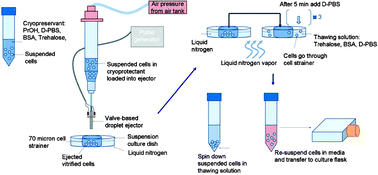Cell encapsulating droplet vitrification†
Abstract
The capability to encapsulate single cells in droplets while retaining high cell viability (>90%) has great impact on tissue engineering, high-throughput screening, as well as clinical diagnostics and therapeutics. We demonstrate a novel method to vitrify a small number of cells using cell-encapsulating droplets. The method allows vitrification at low cryoprotectant concentration (1.5 M


 Please wait while we load your content...
Please wait while we load your content...